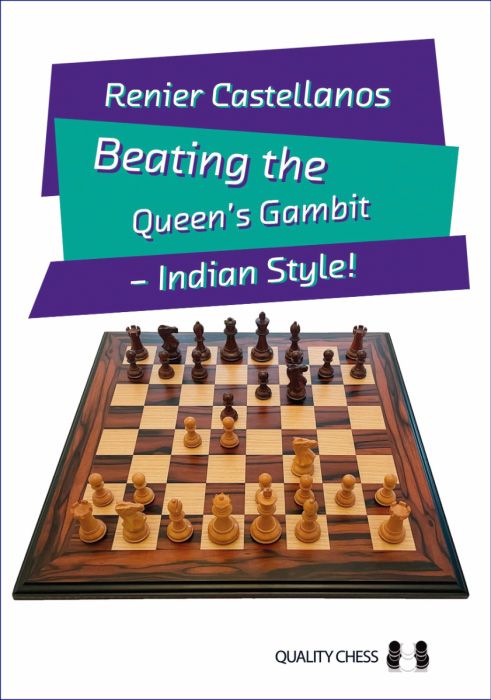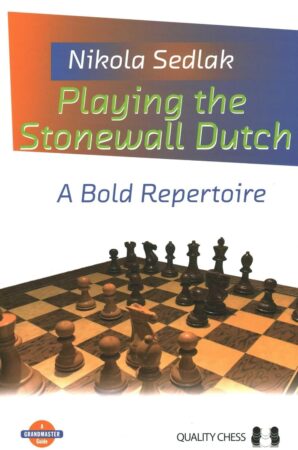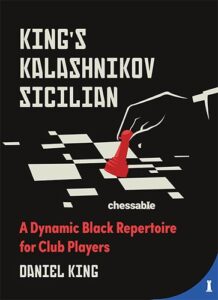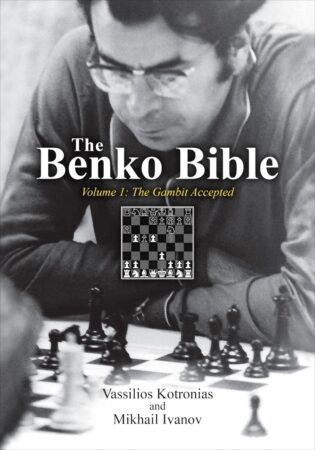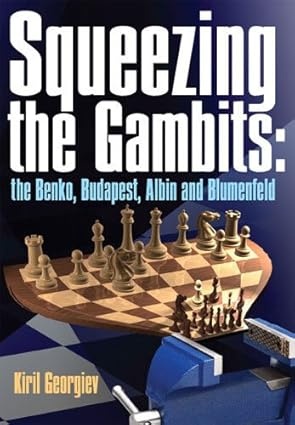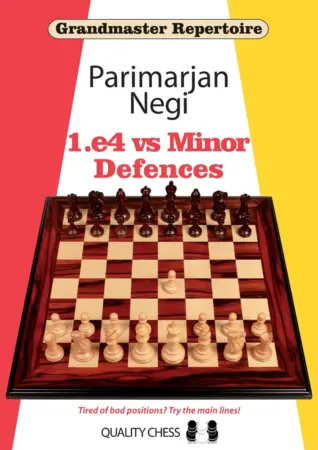Beating the Queen’s Gambit – Indian Style! covers everything you need to know in 1.d4 Nf6 variations in which White avoids the Nimzo-Indian Defense and doesn’t play 3.Nc3. Castellanos has written a separate volume, Playing the Nimzo-Indian on 3.Nc3 Bb4 alone. These two books can be used and read together, but they are useful separately, as you may not like Castellanos’ recommendations either for the Nimzo or the Anti-Nimzo lines. Both books, starting with Playing the Nimzo-Indian are the result of an idea Castellanos had during his work at the Killer Chess Training Academy. They wanted to provide their students with a solid, yet dynamic repertoire against d4 which focused on the Nimzo.
Beating the Queen’s Gambit recommends the move order 1.d4 Nf6 2.c4 e6 3.Nf3 d5. According to him, waiting for the knight to be developed on f3 before transposing to the Queen’s Gambit, Black reduces White’s possibilities and the number of variations White could choose from.
This is a full repertoire, excluding only the Nimzo. The book covers every possible deviation for White, including the early system openings, the London, Trompowsky, Jobava, Richter-Veresov, and the Colle, thus equipping you with a weapon against anything White can throw at you after 1.d4 Nf6.
Chessbook is the fastest way to build a bulletproof opening repertoire. It helps you find the gaps in your repertoire before your opponents do, pick the best moves to maximize your win-rate, and you’ll only spend time on the moves you’ll actually see in real games.
The book is divided into four parts. Part one covers 1.d4 Nf6 2.c4 e6, and every option for White after that, including rare moves such as Bg5 or Bf4, with the focus on 3.Nf3 d5, a transposition to the Queen’s Gambit. Many of the lines Castellanos recommends are based on dxc4, followed by a6 and c5 or b5, which resembles the Queen’s Gambit Accepted, but never actually transposes to it. I like his repertoire because of those lines. I often take on c4 when I can, and try to hold on to the pawn. Part two focuses on the Vienna, which is his recommendation after 1.d4 Nf6 2.c4 e6 3.Nf3 d5 4.Nc3. Castellanos’ 4…dxc4 Vienna repertoire is sharp, dynamic, and fun, which is usually the case with the Vienna QGD. He avoids the main lines and gives the idea of 5…b5 as the main focus of this part of the repertoire. This approach is slightly risky in my opinion, but it’s not unsound, and you will probably end up winning some games for the surprise factor alone.
The third, and, for me, most instructive section focuses on the Catalan, which is perhaps the main line today after 1.d4 Nf6 2.c4 e6, with g3 on either move 3 or 4. His recommendations are again based on dxc4, thus entering the Open Catalan, and keeping in line with the rest of the repertoire. The focus of the lines he proposes is a6, Nc6, and Rb8, obviously playing for a dynamic queenside expansion and avoiding any trouble down the h1-a8 diagonal. The final part of the book, as I’d already mentioned, covers deviations, what Castellanos calls “Anti-Systems”, such as the London or the Colle.
Beating the Queen’s Gambit – Indian Style! Is the best kind of opening book – lots of explanations, annotations, text, and easily understandable lines with no engine evaluations or endless sidelines one can’t follow without using seven separate boards to move the pieces. Castellanos focuses on ideas instead of theory, and I love that. The book has a now recognizable Quality Chess layout and design, with lots of “empty space”, making the book easy to read and far less confusing and daunting than a majority of opening books by other publishers.
If you’re looking for a simple to learn, yet dynamic repertoire for Black against 1.d4, this is probably it. I would say that Beating the Queen’s Gambit is suited for anyone above 1600 FIDE, and especially for titled players, as the ideas Castellanos recommends can be quite advanced.

